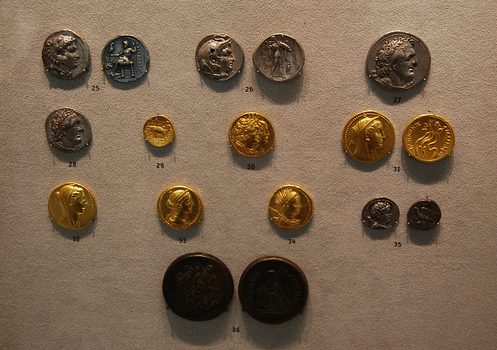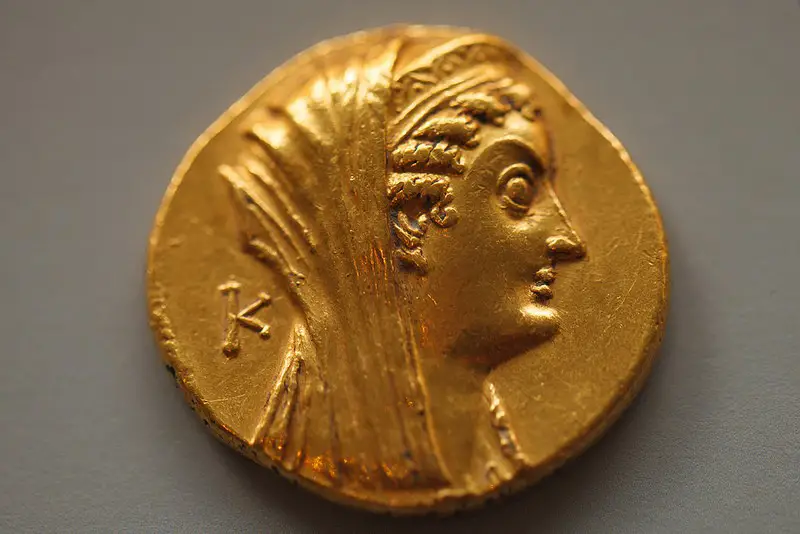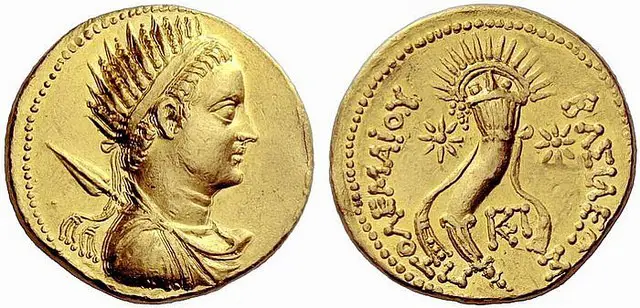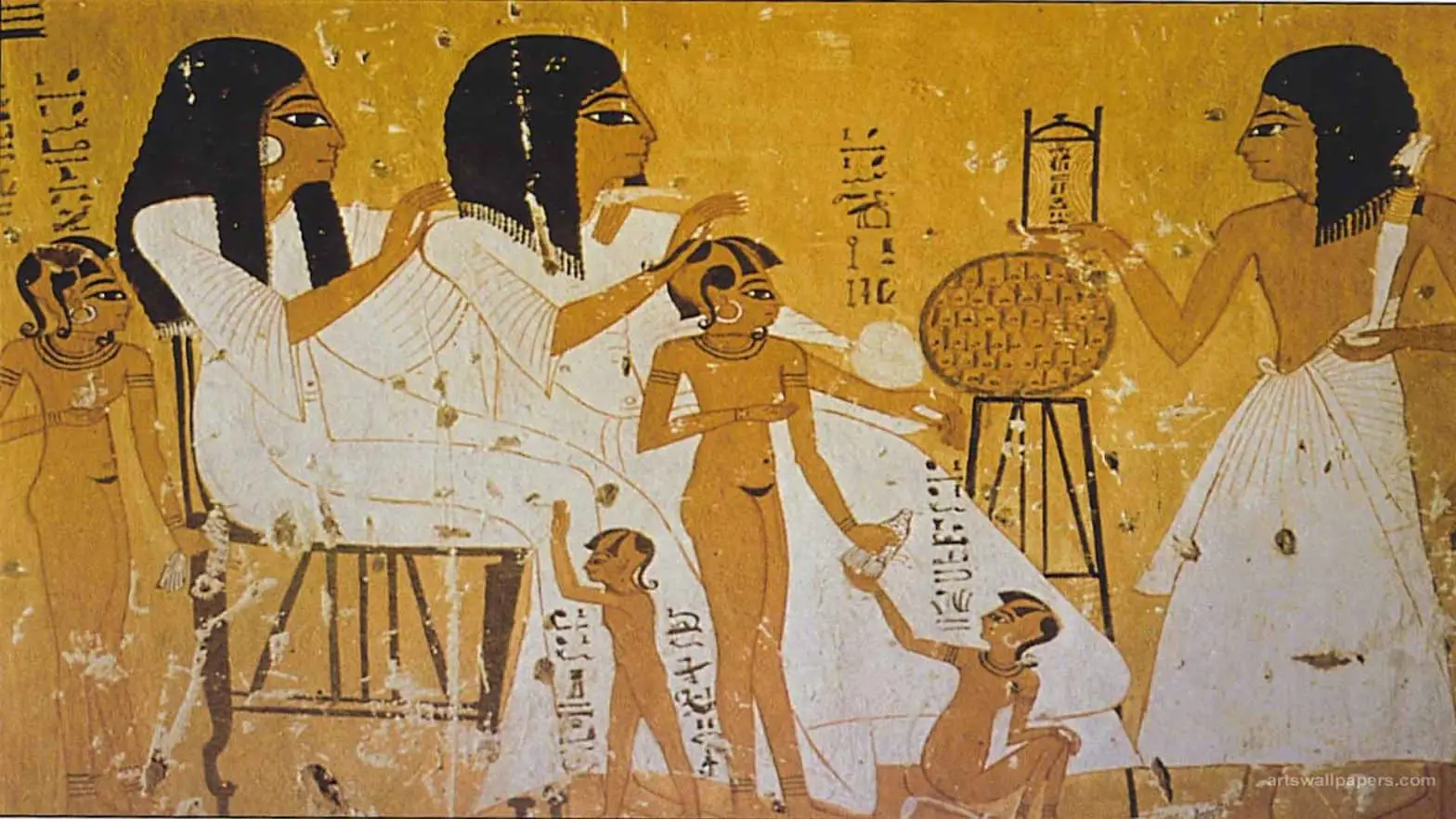Table of Contents
*This post may contain affiliate links. As an Amazon Associate we earn from qualifying purchases.
The earliest coins of Ancient Egypt are believed to date from the Late Dynastic Period, the period right before Egypt’s final conquest and definitive subsequent rule by foreign powers. Although most coins that remain from the ancient period are primarily from the Ptolemaic and Roman epochs, early coins right before the Persian conquest would correspond with coinage becoming common in other parts of the Mediterranean world. Currency facilitated trade on the great waterway that the Romans would come to know as Mare Nostrum, Our Sea, and Egyptian coins would allow the nation of Egypt to participate in the active trade of goods that was carried across the Mediterranean Sea.
Although there are a number of reasons to study the coinage of Ancient Egypt, one of the more significant reasons lies in the ability of coinage to provide a clear historical record that corroborates the sometimes spurious reports of ancient historians and biographers. Beginning with Alexander the Great, it became common to depict rulers on coins, rather than deities and symbolic figures, such as the embodiments of cities or localities, so Egyptian coins are an effective way to date events like transfers of power, shared rule, and other events attested in histories.
What Are Ancient Egyptian Coins
Ancient Egyptian coins, as objects produced in Egypt or by Egyptian rulers for local use, are an archaeological relic that helps paint a vivid picture of the history and political climate of Egypt in the ancient period. Rather than being mere objects stamped with a ruler’s name and a date, Egyptians coins followed the pattern of the Hellenistic period, in that they were often miniature works of art that uniquely depicted rulers. The rulers often sought to distinguish themselves in some way from their rivals or predecessors.

In this fashion, Egyptian coins are similar to the coins of other Hellenistic states, like the Attalids in Pergamum or the Seleucids in Antioch and the Seleucid Empire. However, Egypt is unique in that its dynasty, the Ptolemies, were blessed with unbroken, albeit sometimes turbulent, rule for nearly three centuries, longer than any other dynasty. This meant that Egyptian coins are a visual artistic representation of changing political powers. Such continuous archaeological evidence that provides a visual representation of ancient history may be difficult to find elsewhere, even in city-states like Athens that also featured a lasting political existence, though often ruled by foreign powers.
Suffice it to say that Egyptian coins are interesting for a number of reasons. Egypt is uniquely blessed in its coinage of this period. We must examine Egyptian coins in three different ways: the history of Egyptian coinage, the separate historical significance of the coinage representing historical figures, and our subjective assessments of them. Furthermore, we can divide Ancient Egyptian coins into four major historical periods:
- Late Dynastic Period
- Persian Period
- Ptolemaic Period
- Roman Period
Although Egyptian coins continued to be minted after the fall of the Western Roman Empire in 476 A.D., this date traditionally marks the end of the ancient period in European history. The subsequent Byzantine and Arabic coinage of Egypt fall outside the scope our discussion of the subject.
General History of Ancient Egyptian Coinage
The earliest Egyptian coins were probably minted to pay for Greek soldiers in the Nile delta who were serving the Egyptian king. Foreign powers became far more prominent in Egyptian affairs during the Late Dynastic Period, so the presence of Greek soldiers in Egypt should not come as a surprise. The Greeks would have been present as traders. Some would have naturally been employed to serve as mercenaries. This would have been due in part because Egyptian rulers frequently fought against one another or against foreign threats like the Persians.
Egyptian coins were also minted in the Persian period although evidence suggests that the Persians did not regularly mint coinage as would be the practice later. Exchange of hard metal, frequently silver, had been the norm in Egypt before coinage became common in the Mediterranean. Silver would continue to be used through the end of Egypt as an independent nation. Egyptian coinage, as something to be studied, certainly did not become common until Alexander the Great’s defeat of the Persian Empire. This shift in regional power initiated a new period of Macedonian rule over the fertile and prosperous country.
After Alexander’s death, Egypt fell under the rule of one of his generals, Ptolemy. Ptolemy initiated a dynasty that would last until the death of Cleopatra and Mark Antony in 30 B.C. The Ptolemies and their nation of Egypt were widely known and commented on by the Romans. Roman writers of the time period found the frequent squabbles of Egyptian royals and their practice of brother-sister marriage both amusing and fascinating.
What is important to know from this period is that the Egyptian coins produced by the Ptolemies were generally bronze. Although gold and silver coins were not unknown, Egypt lacked great natural supplies of silver. Though gold was available, gold coins were impractical for day-to-day use since the metal was too soft to remain viable with frequent handling. This meant that the Egyptian coins of the Ptolemies were bronze, although they were represented on the basis of a silver standard, with a Ptolemaic bronze tetradrachm being equivalent to a silver tetradrachm minted somewhere else.
Ptolemaic coins can be dated quite easily since they were marked with the regnal year of the ruler, often preceded by the letter L. Rulers were also depicted as they appeared, often with their sister queens, wearing crowns or diadems of their choosing, or with the physical features that singularly represented them, like corpulence or a youthful appearance for boy kings. Kings chose how they wanted to be represented, with symbols of gods, animals, or whatever else, on the obverse.
The Roman conquest of Egypt resulted in a new series of foreign rulers, but these rulers chose to see themselves as the heirs of the Ptolemies, rather than as international rulers ruling an empire of which Egypt was just one part. The Roman emperors maintained a coinage for Egypt that was distinct from the rest of the Roman Empire. It was based on the standard that existed at the end of the Ptolemaic period. Coins from this period indicated the ruler’s name and date. They have been helpful to historians in their efforts to resolve issues of chronology.
Exploring Their Historical Significance

Egyptian coins are historically significant in the manner they reflect the specific history of Egypt and its rulers. They are also important for the way that they connect Egypt to the greater Mediterranean world. Perhaps this is best discerned in the period of Ptolemaic rule. In the Ptolemaic period, Egyptian coinage featured a consistent pattern of characteristics that lasted throughout the period. However, the standard upon which the coinage was based changed from the silver standard to the bronze standard. The weight of the coinage eventually adopted the so-called Phoenician standards, representing more significant ties with the Phoenicians.
Associated with the historical significance of the coins, is the reality of Egyptian coins as miniature works of art. The reality is that the coin of a Ptolemy II Philadelphus will differ from that of a Ptolemy IV Philopator, which, of course, would also naturally differ from the coin of a Seleucid or Attalid ruler. There would be no reason to collect coins if they were all the same and Egyptian coins represent opportunities for independent collectors just as well as museums to own a little piece of history.
Ancient Coin Buyers Guide

There are a number of factors that should be taken into account when considering purchasing coins regardless of if they are Egyptian coins or any other sort of coin. The value of coins will be impacted by several qualities of the coins. Although we can liken these coins to works of art, because many coins exist in multiple copies produced from a mint, some coins will be rarer than others. This means that one coin may be worth more than another even though it is of a cheaper metal because of its rarity.
Egyptian coins, although following certain patterns, can have their fair share of differences, illustrating changes in power, alliances, and history. Here are some factors that will allow you to price Egyptian coins:
- Size or weight
- Clarity of representations
- Evenness of edges
- Patina
- Rarity
- Artistic quality or beauty
Naturally, this means that, for the buyer, there is a subjectivity to the purchase of a coin. A coin that is unusual may be worth more than another coin that has been better preserved.
Conclusion
The study of Egyptian coins represents a unique opportunity to understand the history of a unique and important nation which managed to hold on to its significance even when under foreign rule. As a source of grain throughout the Mediterranean region, Egypt long maintained a prominent place as a powerful and significant nation, and this history is reflected in the remarkable and well-studied Egyptian coinage that has been left to us today.

